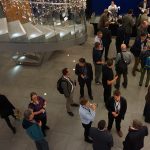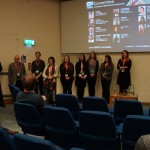2009 Student Award Recipients
The GRSG has made three student awards for 2009. The committee decided to award prizes to the top 3 applicants, rather than observe the three award categories. The three winners are:
Nicholas Roberts (Simon Fraser University, Canada) – Investigation of landslides in La Paz, Bolivia using RADARSAT-2 permanent scatter interferometric SAR and polarimetric SAR
Landslides are a major source of economic and life loss in La Paz, Bolivia. They occur mainly in deeply-incised, unconsolidated Quaternary valley fills, and range from nearly-annual shallow failures to very large (up to 60 km2) prehistoric earth flows. This project will improve understanding of landslide controls and activity in the La Paz area through a combination of geologic field investigation and remote sensing, focusing on newly available data provided by RADARSAT-2. The student award will provide part funding for fieldwork and data in support of this research.
Elliot Sefton-Nash (Bristol University, UK) – Studying the distribution and formation of light-toned layered deposits on Mars
Light-toned layered deposits are high-albedo, indurated, layered sediments whose origin is still very much unclear. These almost always occur in regions of collapse known as chaotic terrain, which are thought to have formed due to catastrophic dewatering of an ice-rich subsurface. This de-watering, known as outflow, caused the release of thousands of km3 of water and shaped the surface of Mars as we see it today. Measurements of thermal inertia from Martian remote sensing satellites are useful for mapping surface materials (i.e. dust, bedrock etc..) but difficult to interpret in areas of steep relief owing to the affects of slope and azimuth. As part of this research a method for measuring thermal inertia in high relief terrain has been implemented that uses high-resolution topography from HRSC to perform a correction for slope/azimuth. The student award will provide part funding for a visit to the University of Washington where these new methods will be tested and validated.
Matthew Garthwaite (Leeds University, UK) – InSAR investigations and numerical modeling of interseismic strain in central Tibet
My research is concerned with the deformation of continental regions with particular focus on theTibetan plateau, and to date I have used broad scale numerical modelling and satellite radar interferometry (InSAR) techniques. The student award will provide funding to attend the 2009 AGU Fall Meeting. At the AGU meeting I will present the results of my work on determining the interseismic strain field in central Tibet using InSAR. I have measured the strain accumulation over a large area which includes four major strike-slip faults within the plateau, whereas previous studies have only looked at individual faults. In particular, the result helps to delineate between currently held end-member hypotheses of continental deformation and has implications for our understanding of earthquake hazard.





